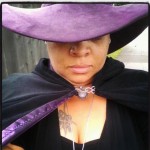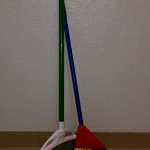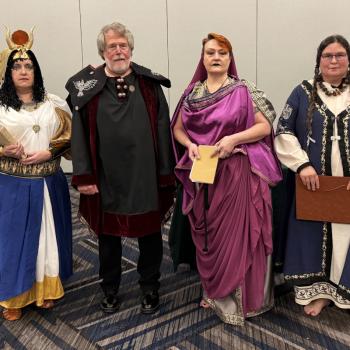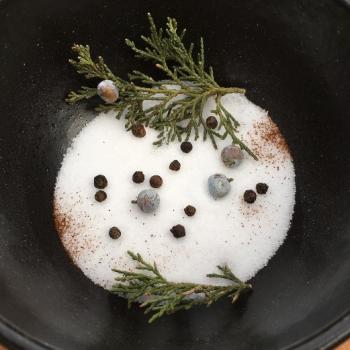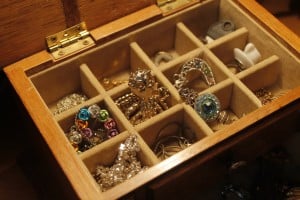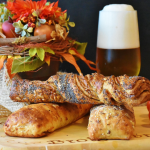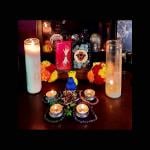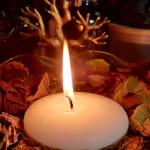By Yvonne Nieves
As an eclectic pagan of a mixed ethnic background, I have always celebrated extensive (but very enjoyable) winter holidays. My ‘holy days,’ as I like to call them, begin with Solstice on December 21st, followed by celebrating Christmas with my family, then Kwanzaa and Three Kings Day. Here, I’d like to share with you about the latter two.
Kwanzaa
As if the Twelve Days of Christmas wasn’t enough, for years now I’ve incorporated this newer African American celebration into my annual holy days celebrations. Kwanzaa was founded by Dr. Maulana Karenga, a professor and chairman of Black Studies at California State University in efforts to unify the black community after California’s Watts Rebellion occurred in 1966. Dr. Karenga incorporated traditional Ashanti and Zulu, as well as other African harvest traditions, into this new Diasporic holiday.
I first recognized it years ago as a child in the early 90’s with family friends, who were also of mixed heritage. I remember my first celebration involving the lighting of candles, and eating rice and pomegranates. Today, I put my own pagan spin on the contemporary seven-day holiday of Kwanzaa. I begin by decorating a dedicated sacred space with Ashanti-inspired kente altar cloth. In my case, I include a piece of Dogon artwork, but you can feel free to use a deity statue, like that of Isis. I add three novena candles on it in red, black and green to symbolize the Africa’s continental colors, instead of the typical seven, and ritualistically light them each evening. As I light them, I call in prayers to my African ancestors, and provide them with offerings that are listed as appropriate for each night of the celebration. For example, the first night is about umoja, or unity, and the “Unity cup,” or pagan chalice, is brought to the altar with mixed fruit juice to represent the harvest. The juice serves as an offering to the ancestors, and I pray to them to assist the greater spiritual, not just black, community in our Unity in Oneness efforts. Each of the following nights, an offering is brought forth to the altar, and a prayer is spoken aloud in honor of each of the concepts developed for this holiday celebration by Dr. Karenga. The candles, which will not be completely burned out, can be relit weekly or monthly to remember the seven principles honored in Kwanzaa, or to call upon the assistance of the ancestors in future ritual work or reverence.
Three Kings’ Day
In Puerto Rico, the holy days stems from a blending of Catholic traditions, beginning with Noche Buena, or Christmas Eve, and typically ending with the Epihany, or Día de los Tres Reyes Magos (Three Kings, Magi, or Wise Men) on January 6th. As a little girl, my mother would fill up shoe boxes with leftover Christmas tree garland and put it under my bed. A more traditional household may create wooden boxes and fill them with hay or grass. Overnight, my father would play the role of one of the Three Wise Men and fill up the shoe box with candy and small toys, which I would enjoy the next morning.
I’ve adapted this tradition to one that I can celebrate as an adult, and as a practitioner of magick. You see, the word mago literally translates to “magician.” And, according to legend, these three magi from the East were also astrologers, perhaps of the Zoroastrianism religion, who traveled from India, Persia and Arabia in search of a new born soul that would bring peace on earth. The Wise Men followed a star, or the planet Venus, and finally located the baby Jesus, whom I regard in my practice as an Ascended Master.
To honor this day, I take the star from atop my Yule tree and recycle it by placing it on my altar. I’ll also take out my tarot deck, and carefully select cards of the Major Arcana with careful intention, and to mark the four sacred directions or elements, like The Magician or The Star for the Element of Air, High Priestess for Water, The Sun for Fire, and The World for Earth. I’ll light one candle in the center, to honor and Jesus’ spirit.
Additionally, I may do spell work, based on the astrological alignment of the moon and corresponding sun sign. This year, Three Kings’ Day falls on a Sunday, with a waning moon in Scorpio. The candle that I’ll use for this day is a gold colored one (the left over gold candle from my Yule ritual). The spell that I will work will call upon Archangel Michael to remove any blockages to my third eye and supporting chakras, and the energies of the magi to assist me in developing my insight and intuition. I’ll also thank Jesus, and make an offering to him in the form of burning frankincense and myrrh resin in my cauldron in honor of the gifts that were brought to Jesus upon his birth.
As they say, a Pagan’s work is never done! The holy days are always an excellent time to honor the ancestors and build on community. While many non-Pagan people of various ethnic heritages may find the concept of Paganism foreign or challenging, celebrating these two traditions and by incorporating your own pagan twist could be a great way to introduce family members and friends to our Craft.
Holy Day Blessings!
Email: [email protected]
Yvonne resides in Chicago’s Pilsen community, holds a Bachelor’s of Arts degree in Anthropology with a concentration in contemporary cultures and world religions. She is a practicing Pagan, an initiated 5th Ray healer, a crystal energy worker, a second degree reiki practitioner, and the co-founder of Sisterhood of Universal Light. Her freelance work includes blogging for The Divine Lotus blog and serving as the Vice President for The Offering Enterprises, an international heavy metal magazine and webzine.



